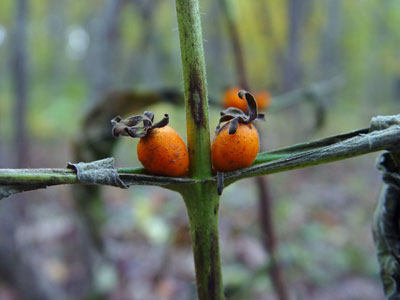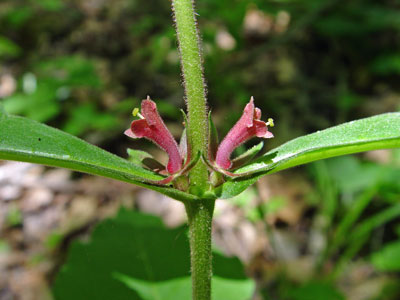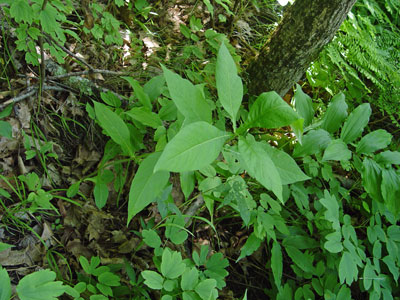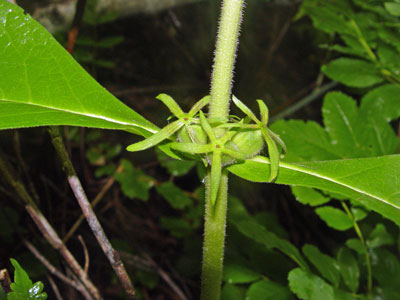DACF Home → Bureaus & Programs → Maine Natural Areas Program → Communities, Plants, and Animals → Rare Plants → Triosteum aurantiacum

Triosteum aurantiacum Bickn.
Wild Coffee
- State Rank: S1
- Global Rank: G5
- State Status: Endangered
Habitat: Rich woods and thickets. [Non-tidal rivershore (non-forested, seasonally wet); Hardwood to mixed forest (forest, upland)]
Range: Cape Breton to western Ontario and Minnesota, south to North Carolina, Kentucky, and Kansas.
Aids to Identification: Wild coffee is a coarse, tall, and hairy perennial herb. Its large, eggshaped leaves grow in pairs and are usually united by a ridge around the stem. The sessile (i.e., unstalked) flowers, borne 1-4 in the axils of the leaves, are a dull red-purple. They are somewhat bell-shaped with five unequal lobes. The most distinctive feature of the plant are its conspicuous bright orange hairy fruits crowned by persistent sepals.

Ecological characteristics: Although it can apparently grow in shade, in dry or rocky woods, this species seems to grow most vigorously in rich, moist soil where it receives at least partial sunlight. It usually fruits abundantly.
Phenology: Flowers in June. Fruits, green in summer, mature to bright orange by fall.
Family: Caprifoliaceae
Synonyms: Maine populations are represented by var. aurentiacum. Synonyms include Triosteum perfoliatum L. var. aurantiacum (Bickn.) Wieg.

Known Distribution in Maine: This rare plant has been documented from a total of 9 town(s) in the following county(ies): Aroostook, Cumberland, Kennebec, Somerset, York.
Reason(s) for rarity: At northern limit of range.
Conservation considerations: Populations are vulnerable to conversion of their habitat to residential or commercial use. This is believed to be partly responsible for its rarity in Maine.
